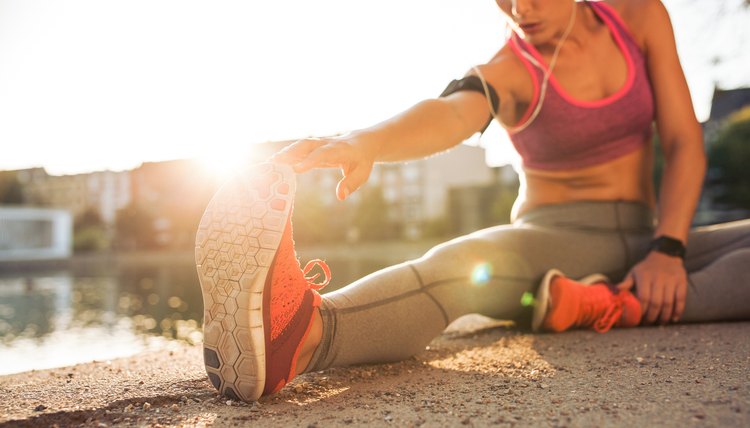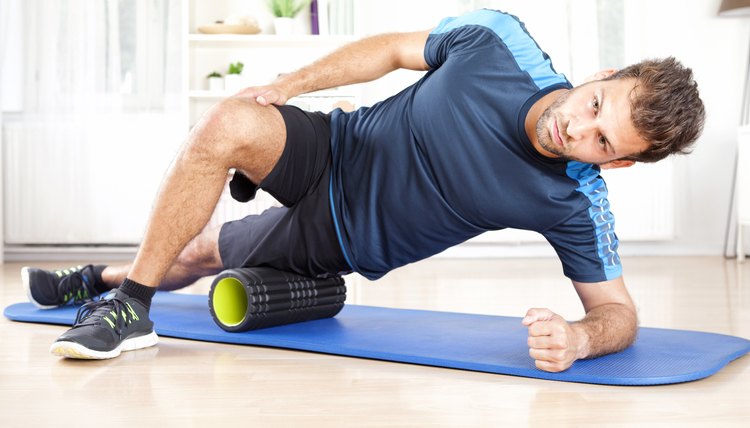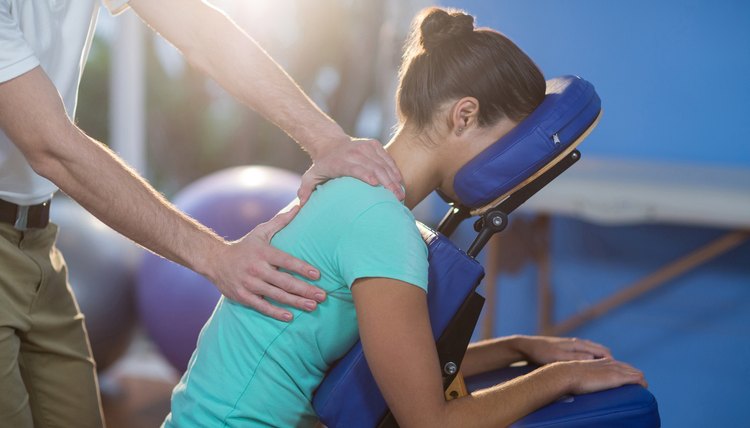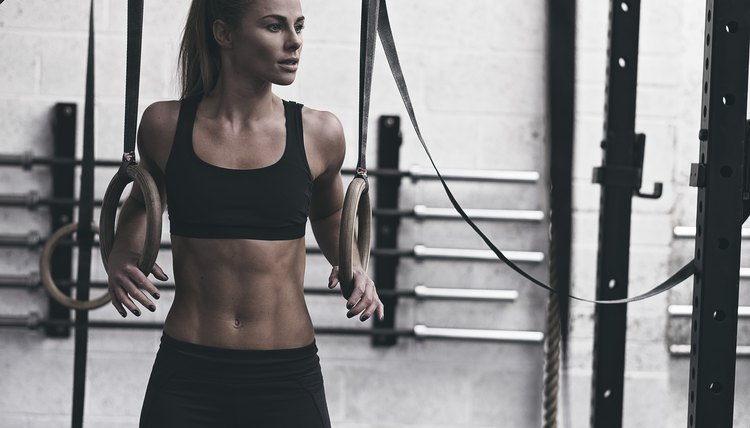How to Ease Muscle Soreness After a Workout

When you work out, you're essentially creating small tears in your muscle fibers. When those muscles recover, that's how you build strength. But the act of breaking down those fibers can leave your muscles tender, sore and even difficult to move. Plus, that soreness can take as long as 24 hours to set in (often is referred to as delayed onset muscles soreness, or DOMS), meaning you'll be in greater pain two days following a workout than you were the morning after. But when muscle soreness strikes, here's a five-step process you can use to reduce pain and get back to exercising faster.
1. Always Warm Up First
First things first. Be sure to warm up before each workout. Warming up increases the flexibility of the muscles and reduces overall muscle tension, which prevents excessive micro-trauma and can prevent soreness due to major or minor muscle strain. Think of your muscles like a rubber band that have been in the freezer. If you stretch it too far too fast, you'll do damage. Easy, dynamic stretches are a great way to start out or low-impact cardio will get your heart pumping and your muscles warm.

jacoblund/iStock/Getty Images
2. Never Skip a Cooldown
You may think, "Thank goodness I'm finally done with this workout!" and want to stop cold. But that's a bad idea for your body. So always do a brief cooldown after each sweat session. Slowly bring your heart rate down and stretch the muscles you just exercised to improve blood flow and increase your range of motion. Your muscles are at their warmest after a workout, so be sure to take advantage of that in your stretching. Hold each static stretch for 30 to 60 seconds for maximum benefit.

jacoblund/iStock/Getty Images
3. Try Foam Rolling
See that weird foam thing in the corner of your gym? It just might be the key to less muscle soreness. Use a foam roller for 10 minutes after your workout. Foam rolling can release knots and adhesions in the muscle tissue, improving circulation. Place the roller under your hips, glutes, thighs, shoulders or wherever else is tight. Roll over the muscles, stopping and working on any areas that are especially tense.

jacoblund/iStock/Getty Images
4. Treat Yourself to a Massage
Go ahead and relax! Get 30 or more minutes of massage therapy after a workout or on your rest days. Massage improves blood flow to sore muscle tissues, releasing micro-adhesions and encouraging muscle repair. Therapy can be painful but is an effective treatment if you can handle the sensation.

jacoblund/iStock/Getty Images
5. Prioritize a Good Night's Sleep
After pushing your body in the gym, you need time to reset and recover. Get at least seven and a half hours of sleep each night. The body repairs itself at night, triggering important hormones that signal repair to muscle tissue. Sleeping fewer than seven and a half hours decreases the hormonal response, meaning your recovery (and results) will be slower.

jacoblund/iStock/Getty Images
What Do YOU Think?
Have you ever dealt with sore muscles after a workout? What did you do? Did you try any of the things in this action plan? Which of these things do you think you'll try now?

jacoblund/iStock/Getty Images
References
Writer Bio
Susy joined LIVESTRONG.COM at its inception in 2008. Focused on all things food, fitness and health related, her daily contributions as the LIVESTRONG.COM community manager is an asset to the site and the millions of community members. She has a M. A. in Clinical Psychology.
